Are you interested to know how to keep your favorite cucumber variety growing year after year? Saving cucumber seeds is the secret to preserving unique flavors and ensuring a bountiful harvest. It’s a simple process that can save money and help maintain genetic diversity in your garden.
You’ll learn how to choose the best cucumbers for seed saving, extract and dry the seeds properly, and store them for future use. We’ll also explore the benefits of saving cucumber seeds and discuss the differences between open-pollinated and hybrid varieties.
Ready to become a cucumber seed-saving pro? Let’s dive into the world of cucumber seed preservation and unlock the potential of your garden. You’ll be amazed at how easy and rewarding this process can be!
- Related article: Tips for Seed Saving
6 Key Takeaways on How to Save Seeds From Cucumbers
- Saving cucumber seeds helps keep their genetic traits and variety alive. You get plants that might not be available in stores.
- Choose open-pollinated or heirloom varieties for seed saving. Avoid hybrids because they don’t stay true to type.
- Dry the seeds well in a warm place with good airflow. This stops mold and keeps them good for planting later.
- Store dried seeds in cool, dark places. Use labeled, airtight containers to keep out moisture and temperature changes.
- Hybrid seeds can give you unpredictable plants. Heirloom or open-pollinated seeds are more reliable.
- Cucumber seeds can last up to 10 years with proper storage. This means you can have several seasons of good germination.
Why Save Cucumber Seeds?
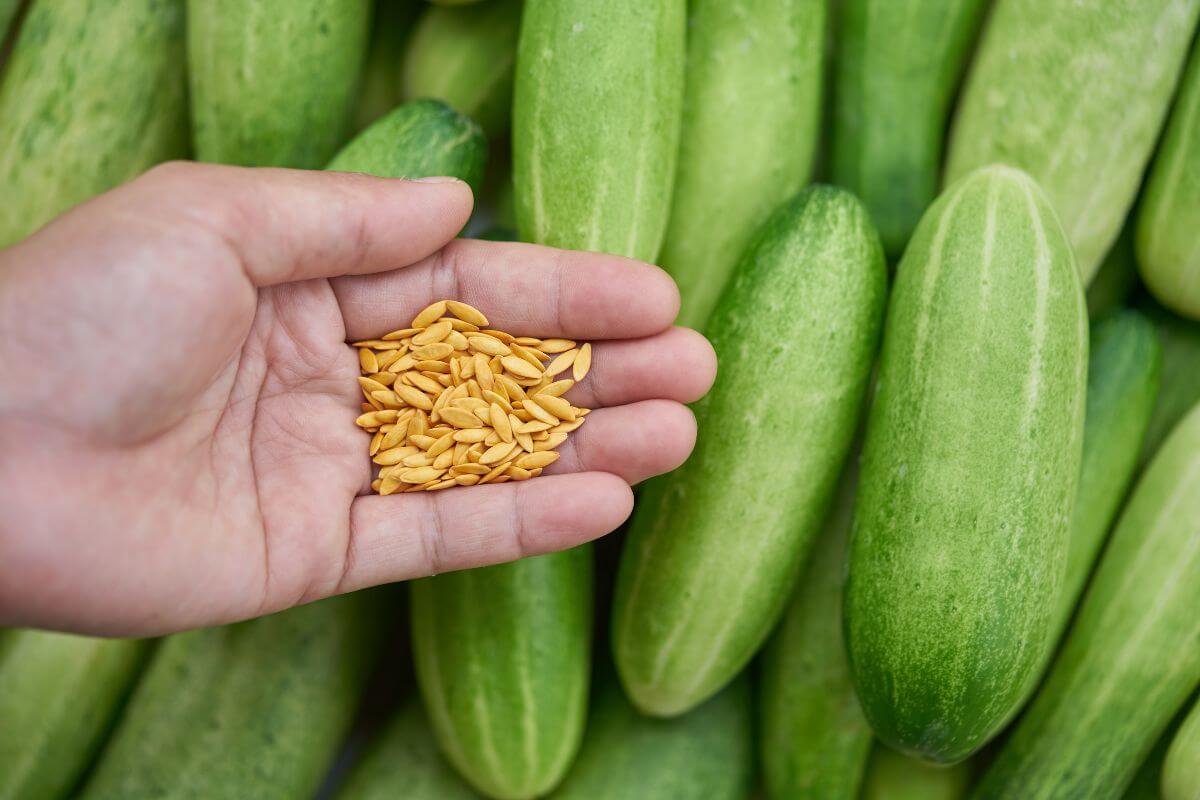
Saving seeds means collecting and keeping seeds from cucumber plants or other veggies for future planting. This way, you can grow your favorite cucumber varieties every year.
Saving cucumber seeds has several benefits:
- Preserve Genetic Diversity – It keeps unique traits of specific cucumber varieties that you can’t buy in stores.
- Reduces Gardening Costs – You won’t need to buy new seeds each season.
- Improves Plant Resilience – You can choose plants that do well in your garden. This leads to stronger, healthier cucumber plants.
By saving seeds, you can maintain a variety of cucumber plants, save money, and grow resilient plants in your vegetable garden.
When growing cucumbers, I recommend using open-pollinated, heritage, or heirloom seeds. They ensure you get the same types of cucumbers as the parent plants from which the seeds were saved.
How to Save Cucumber Seeds
Here are five simple steps to save your cucumber seeds.
1. Choose the Best Cucumber Seeds
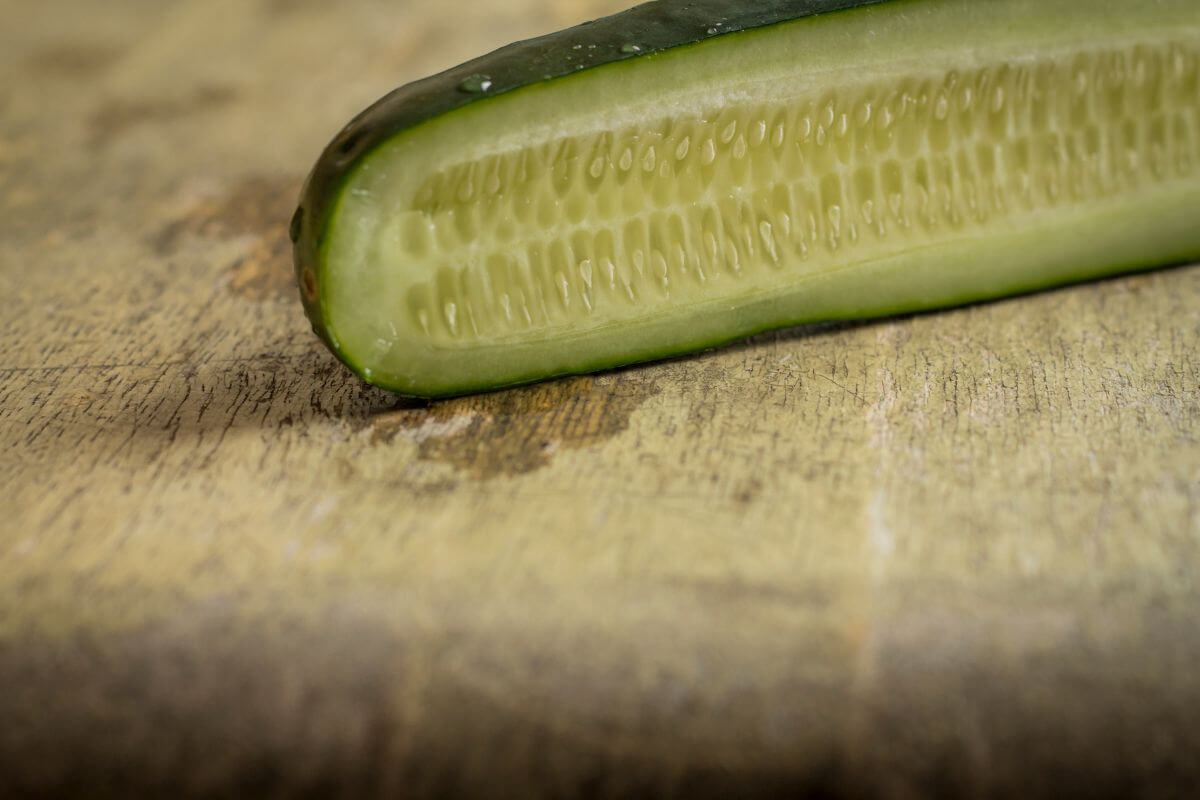
To pick the best cucumber seeds, you should start with open-pollinated or heirloom varieties. These types guarantee seeds that will grow true to the parent plant.
Let the cucumbers mature fully on the vine. They should go past the edible stage until they turn yellow or orange and become soft. Leave them on the vine for 1-2 weeks after they change color. This ensures the seeds fully mature.
When the cucumbers are yellow or orange and soft, harvest them. You can let them sit indoors for a few more days to further mature the seeds.
Cut open the cucumber and scoop out the seeds. Mature seeds are larger and more developed than those in cucumbers ready to eat.
To get the best results, grow only one cucumber variety or separate different varieties by at least half a mile to prevent cross-pollination. Choose seeds from disease-free plants with the tastiest fruit to keep desirable traits.
2. Soak the Cucumber Seeds
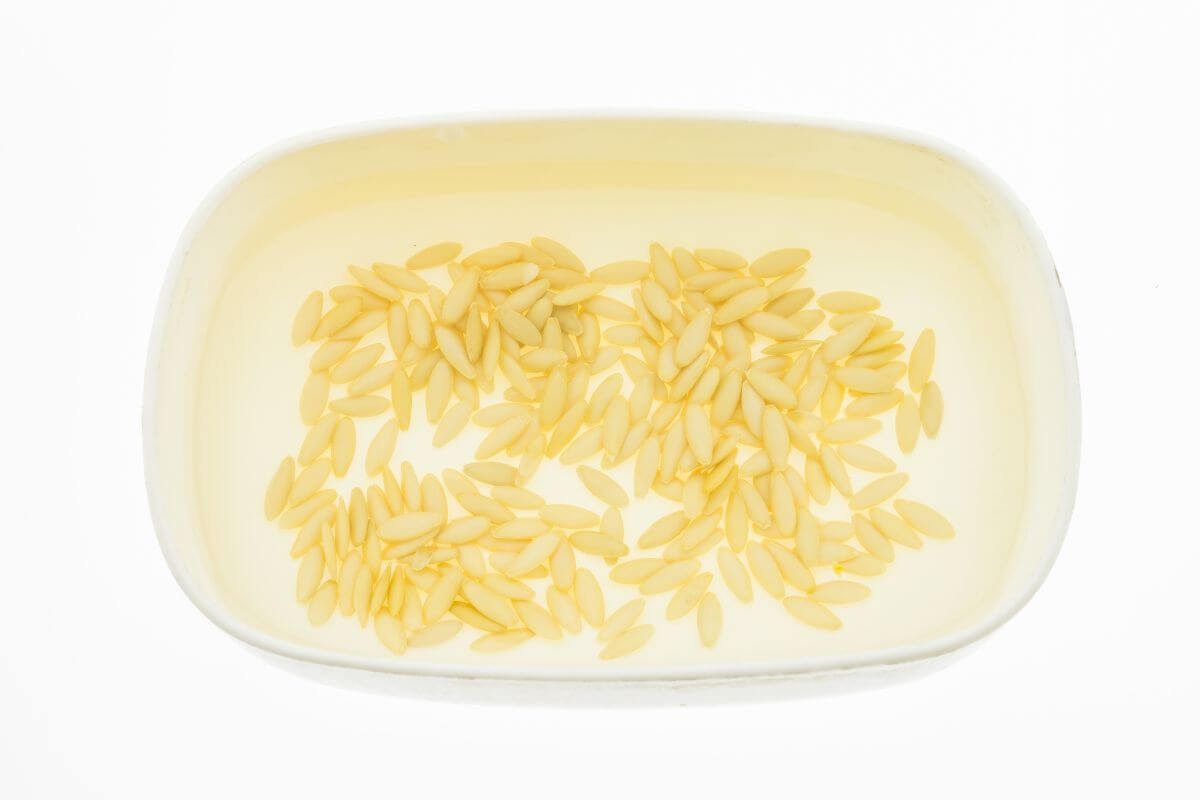
To help cucumber seeds germinate faster, start by placing them in a clean glass or bowl. Cover them with lukewarm water, making sure the water is 1-2 inches above the seeds.
Let the seeds soak for 5-10 hours or overnight. After soaking, drain the water and gently blot the seeds dry with a paper towel.
Next, dampen a paper towel with warm water. Fold the seeds into the damp towel. Place this towel in a plastic bag or container to keep it moist.
Keep the seeds at a temperature above 70°F (21°C). Check the seeds daily for sprouting. When tiny roots appear, they are ready for planting. Use clean, lukewarm water to avoid shocking the seeds.
Do not soak for more than 24 hours to prevent drowning or rotting. Make sure the paper towel stays moist but not soaking wet.
3. Check If Cucumber Seeds Are Ready for Storage
To see if cucumber seeds are ready to store, try the Snap Test. Take a dried seed and snap it in half. If it bends, it’s not dry enough. If it snaps cleanly, it’s ready.
For smaller seeds, use the Hammer Test. Put a seed on a hard surface and hit it with a hammer. If it shatters, it’s dry. If it smashes, it’s not.
Look at and touch the seeds. Dry seeds should be lighter in color and feel hard. They shouldn’t feel soft or moist.
Let cucumber seeds dry for 2-3 weeks before storing. During cleaning, use the Floating Test. Viable seeds will sink. Bad seeds will float.
Mature seeds will be bigger and more developed than those from cucumbers you eat. Check their color and size to make sure they’re ready for storage.
4. Dry the Cucumber Seeds
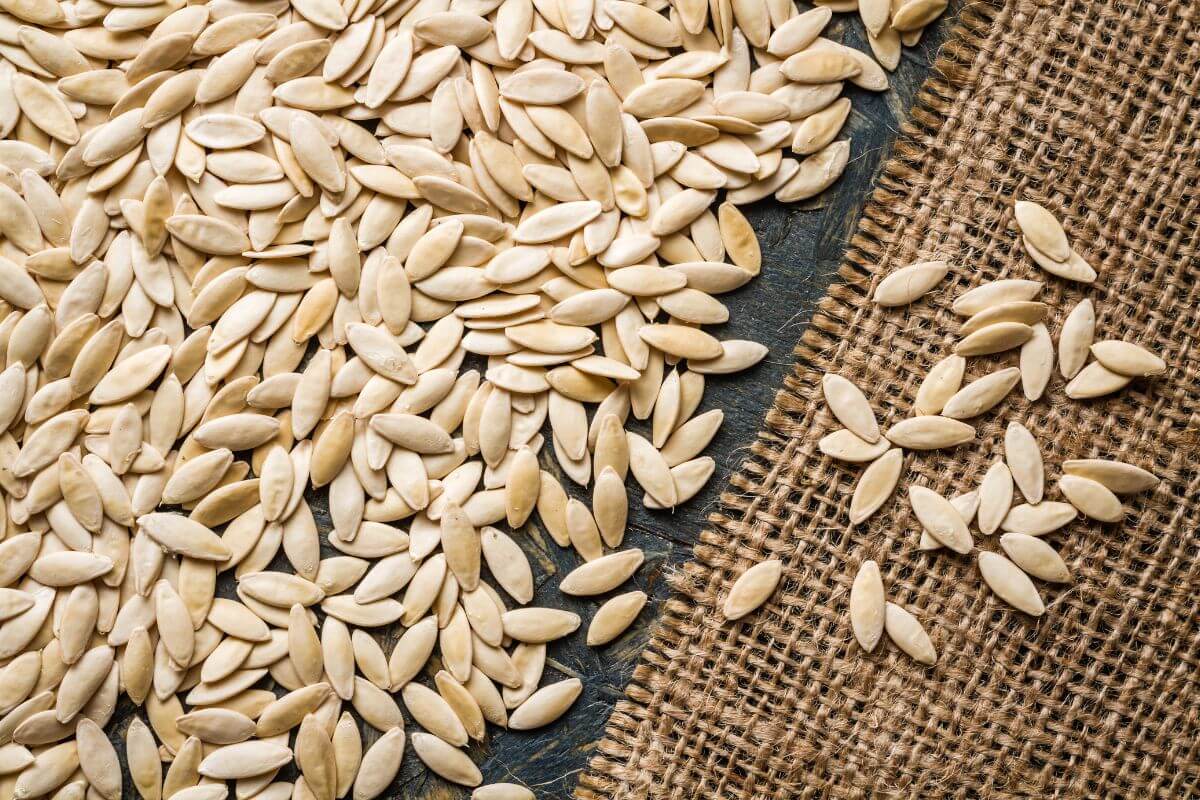
Drying cucumber seeds properly is important for long-term viability. Follow these steps to dry them effectively:
- First, clean the seeds. Rinse them well to remove any pulp or gel.
- Next, spread the seeds in a single layer on a clean, dry surface. You can use paper towels, coffee filters, window screens, or fine mesh screens.
- Choose a warm, dry area with good air circulation to dry the seeds. Avoid direct sunlight since it can damage the seeds. Allow 1-2 weeks for drying, depending on humidity.
- Maintain a temperature between 70-80°F (21-27°C). Use a fan on a low setting to promote air circulation. Don’t aim it directly at the seeds.
- Stir or flip the seeds daily to ensure even drying.
- Protect the seeds from pests by covering them with a light cloth or screen.
- Check for dryness using the snap test or visual inspection.
- Once dry, sift the seeds to remove any remaining debris.
5. Store the Cucumber Seeds Properly
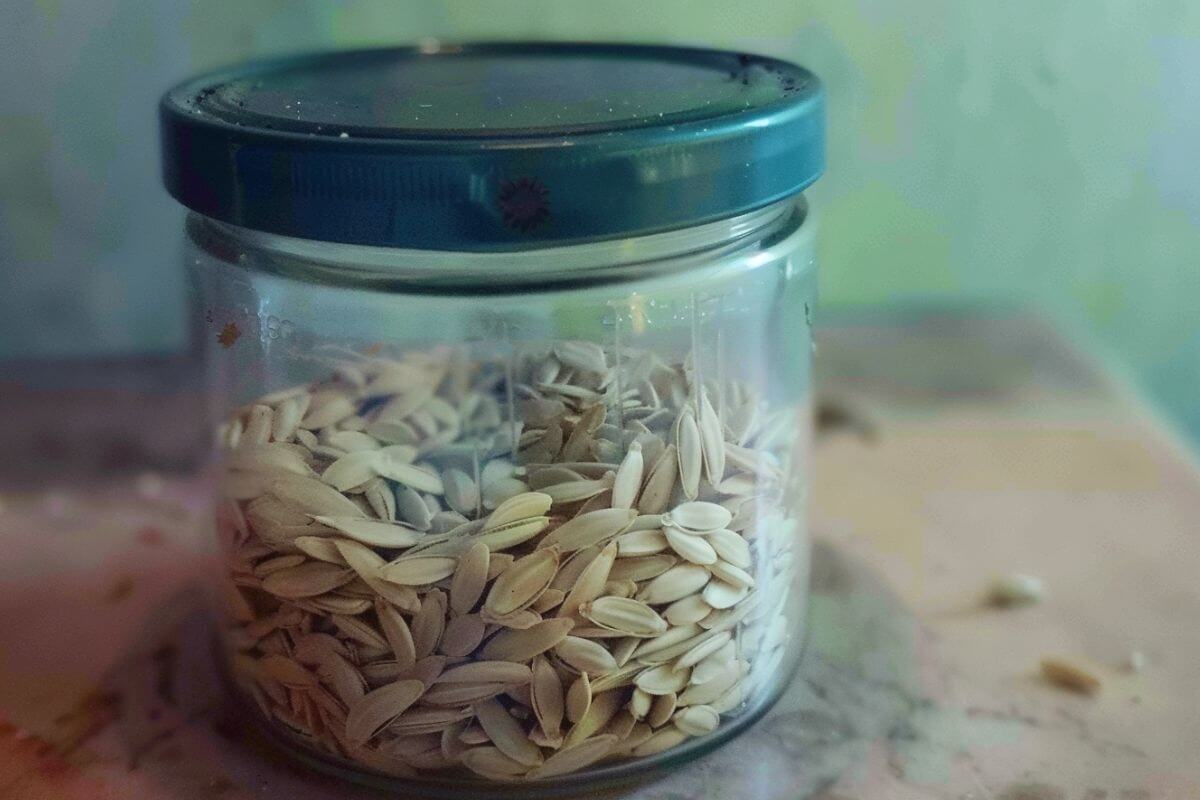
Once your seeds are dry, you can store them in a seed envelope, paper bag, glass jar, or any airtight container. Plastic bags work too.
Label the bags with the cucumber variety and the year. This helps you remember the crop season.
Ensure your cucumber seeds are completely dry before storing them. If you see condensation inside the bag, take the seeds out to dry a bit longer.
How Long Will My Cucumber Seeds Last in Storage?
Cucumber seeds can stay viable for about five years if stored right. Dry them until they have less than 8% moisture before storing (source).
To keep seeds in good shape, make sure the temperature in Fahrenheit plus the percent relative humidity (RH) is less than 100. For example, storing seeds at 60°F with 30% RH is ideal (source).
These estimates assume perfect storage. Bad storage can cut seed life short. If you’re unsure about your cucumber seeds, test them before planting to see if they sprout.
Can I Save and Grow Hybrid Cucumber Seeds?
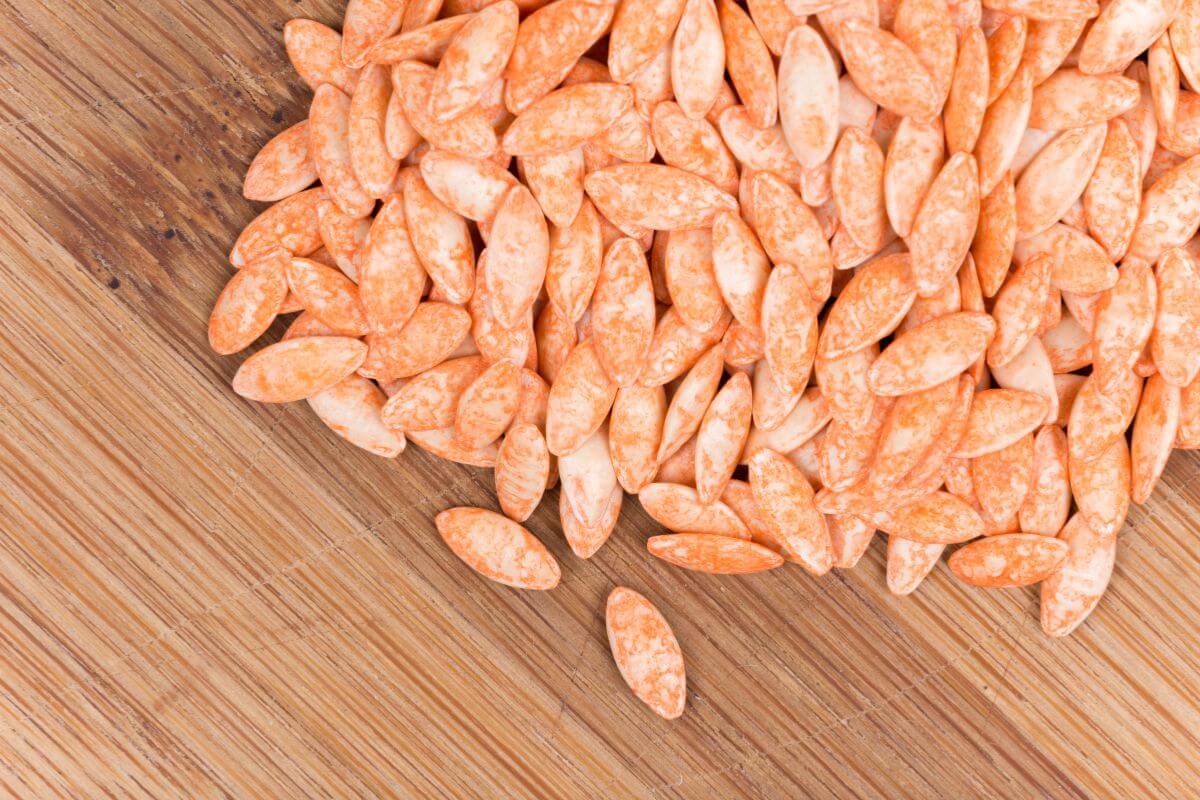
Saving seeds from hybrid cucumbers is tricky. Hybrid cucumber seeds won’t grow plants exactly like their parent. They might mix traits from different parent plants used to create the hybrid.
These plants might not have the qualities you want. They might lack disease resistance or high fruit yield. Some seeds might grow plants with bitter fruit or poor growth.
Sometimes, hybrid cucumber seeds are sterile. They can’t make new plants. It’s better to use heirloom cucumber seeds instead of hybrids if you want to save seeds. Heirloom seeds make plants just like the parent plant.
For saving cucumber seeds, use open-pollinated or heirloom cucumber varieties, not hybrids. These seeds give you plants just like the parent plant.
If you try saving seeds from hybrid cucumbers, expect different results each time. Think of it as a learning experience, not a sure way to grow your favorite cucumber.
Another great seed to save is Tomato. There are lots of hybrid tomato varieties that you can save seeds from but just like cucumbers, new tomato offspring may not be exactly like the original.
- Learn more about Tomato Seed Saving
Final Thoughts on Cucumber Seed Saving
Saving seeds is a smart way to save money and get cucumbers that thrive in your climate.
When you save seeds from the plants that do well in your garden, you pass on the strongest genes.
The more seasons you save and replant seeds, the stronger your plants will become. You’ll get better at growing cucumbers and enjoy tastier ones too.
Cucumber Seed Saving FAQs
1. Can You Save Cucumber Seeds to Plant Next Year?
Yes, you can save cucumber seeds to plant next year. Just take the seeds out of a fully ripe cucumber, wash them well, and let them dry completely before storing them in a cool, dry spot. It’s best to pick seeds from open-pollinated or heirloom types, not hybrid cucumbers, for better results.
2. What Is the Best Way to Dry Cucumber Seeds?
The best way to dry cucumber seeds is to lay them in one layer on a paper towel or screen in a warm, dry place with good airflow. Let them air dry for about a week, stirring them sometimes to dry evenly. When they’re completely dry, keep them in a sealed container in a cool, dark spot.
3. Will Old Cucumber Seeds Germinate?
Old cucumber seeds can germinate, but their viability decreases over time. Properly stored cucumber seeds typically remain viable for about 5 years, with germination rates declining each year. To test old seeds, try germinating a few in a damp paper towel before planting a full crop.
For guides on how to save seeds for other plants, check out these articles:
- https://www.purdue.edu/hla/sites/yardandgarden/storing-leftover-garden-seed/
- https://ucanr.edu/blogs/blogcore/postdetail.cfm?postnum=12950
- https://extension.illinois.edu/blogs/good-growing/2023-01-20-are-my-seeds-still-good-testing-seed-germination
- https://extension.colostate.edu/topic-areas/yard-garden/storing-vegetable-and-flower-seeds-7-221/

